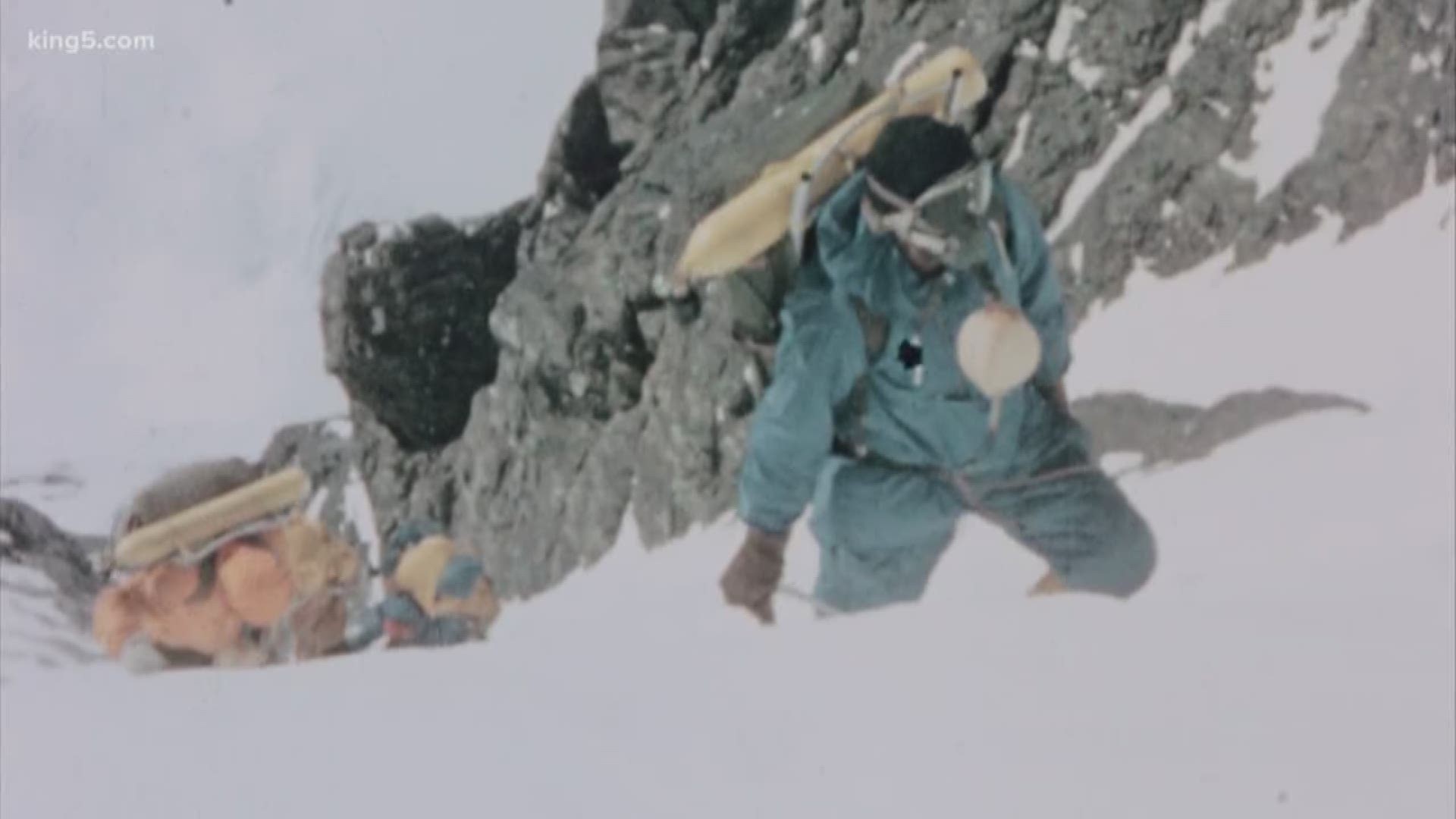On a clearer day, in the shadow of the Olympics, you'll find a treasure.
"The first mountain I climbed ... Olympus," said the man near his back porch. "People need to test themselves in the natural world, and the best teacher in the world is nature."
That man, Jim Whittaker, is known throughout the mountaineering community. If there was a Hall of Fame at Mount Everest, he'd be in it.
He was the first American to summit the mountain back on May 1, 1963. The born and bred Seattleite trained for years, climbing Mount Rainier 50 or 60 times before seeking the pinnacle, or as he says, "the top of the world, the highest point on earth."
"My god, it is so beautiful over there, oh man, talk about beautiful," the 90-year-old with the energy of someone decades younger said. "It's got the ice fans, glaciers, the rock walls, the summit, it's got altitude."
His accomplishments led to an elevated profile, and he can count meetings with five presidents. He became close friends with the Kennedys. He even climbed Mt. Kennedy in the Yukon, which was named after Jack and one that he summitted with Robert and Ted back in '65.
Yet, the conversation still comes back to Everest. It has been flooded lately with tourists and climbers, leading to viral photos of lines near the summit and 11 deaths in roughly a month.
"It's changed so much," he said again with a youthful enthusiasm. "We walked 185 miles just to get to the base of the mountain. Now you can fly in within 40 miles of it. So within six to eight days you are there.
"The big danger is the lack of oxygen. I mean you know it's called the death zone for a reason. There is not enough oxygen to support life above 24,000 feet," said Whittaker, whose son has also scaled the mountain twice.
Whittaker said rope lines now lock climbers in, and when minutes matter in dodging storms, it can leave climbers stuck and in grave danger.
"You better get down or you're dead," he said.
Whittaker said the mountain has become so popular, that untested guides or sherpas are leading climbers, adding to the issues. Yet, the Nepal government has shown little interest in managing the numbers.
"A permit? Got $11,000 bucks we'll take it! You're on! Look at that line of people, every person paying $11,000 to the government! Man talk about a cash flow, huh?" quipped Whittaker.
He believes the Nepalese governments should regulate the mountain, whether it means issuing fewer permits, or establishing criteria for climbers before making the ascent.
"In order to climb McKinley (now Denali) you had to climb Rainier," he said about his adventures. For Everest, Whittaker said it's, "Give me 20,000 feet somewhere and we'll let you sign up for the summit of Everest."
Whittaker doesn't share the same concern with Mount Rainier, despite the recent spate of injuries, rescues, and deaths. His nephew Peter was part of an expedition back in 1981, which ended with an avalanche that killed 11 climbers on Mount Rainier.
"Climbing is dangerous," he said, noting that the National Park Service does a good job regulating the mountain, despite heightened interest. "You learn about yourself and what can do, and what you can't do."

